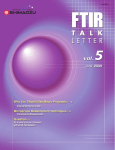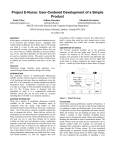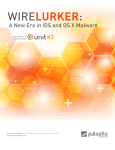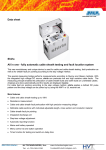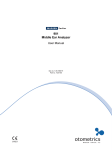Transcript
Pre-Firing Your New Kiln Before using a new kiln for glass projects, you will need to pre-fire it. This burns out binders, moisture, and other residue left over from the manufacturing process. New shelves can be slow to take on primer, so we recommend pre-firing them, too. To do this, coat your new kiln shelf with Bullseye Shelf Primer. (See Using Bullseye Shelf Primer for mixing instructions.) After the pre-firing, be sure to thoroughly scrape and re-prime the kiln shelf before firing any glass on it. Pre-Firing Process Place the primed shelf and kiln posts in the kiln and program it with the three-segment schedule below. To allow moisture to escape during the first segment, vent the kiln until it reaches 700˚F (an opening 3 mm wide is plenty). Once the kiln reaches 700˚, close the kiln. The top temperature (in Segment 2) is 1520˚F or at least 20˚F higher than the top process temperature you’ll be using for glass projects. Note that curing paint or oil on the kiln’s elements can produce an odor. This is usually gone after a few firings but you may want extra ventilation at first. See the Paragon User Manual for more info on safely setting up and operating your kiln. Pre-Firing Schedule Rate 1 400°F / hour 2 AFAP 3 400°F / hour Temperature Hold 1250°F 1:00 1520°F (or at least 20˚F higher than intended top process temp for glass projects) 1:00 70°F (room temperature) • • • • • Bringing Home Your New Kiln Kiln Operation Kiln Shelves and Furniture Preparing Kiln Shelves Recommended Annealing Cycle for Bullseye Glass Each included with a $39 subscription to Bullseye Kiln-Glass Education Online video lessons. Subscription gives you access to the complete video library—more than 60 so far. Each 10-15 minute lesson is designed by Bullseye instructors and appropriate for everyone from beginners to advanced kilnformers. Sign up today! bullseyeglass.com/bkeo — 20150423_KMF • RC8022 Segment Get the Most From Your Kiln With These Bullseye Video Lessons b ullsey eglass.com
